These are the Venture Challenge Fall 2023 teams!
Six teams have started the Venture Challenge Fall 2023! Between 11 October and 7 December these starting lifesciences entrepreneurs will learn everything there is to know about building and pitching a businessplan. By participating in the Venture Challenge, the teams will get a tremendous boost to get their idea to the next level. Not only will they receive one-on-one coaching, but they will also get the opportunity to pitch to investors and connect with seasoned entrepreneurs.
Below you'll find the 6 participating teams, including a brief summary of their invention.
DEPREDICT - Data Driven Decision making for faster treatment and recovery in mental health
1/3 of patients are not responsive to initial antidepressant treatment. DEPREDICT is a novel tool that analyses brain MRI and clinical data to provide an early assessment of treatment response within one week of first administration. This rapid assessment of antidepressant response is a valuable tool for healthcare providers and patients with major depressive disorder (MDD).
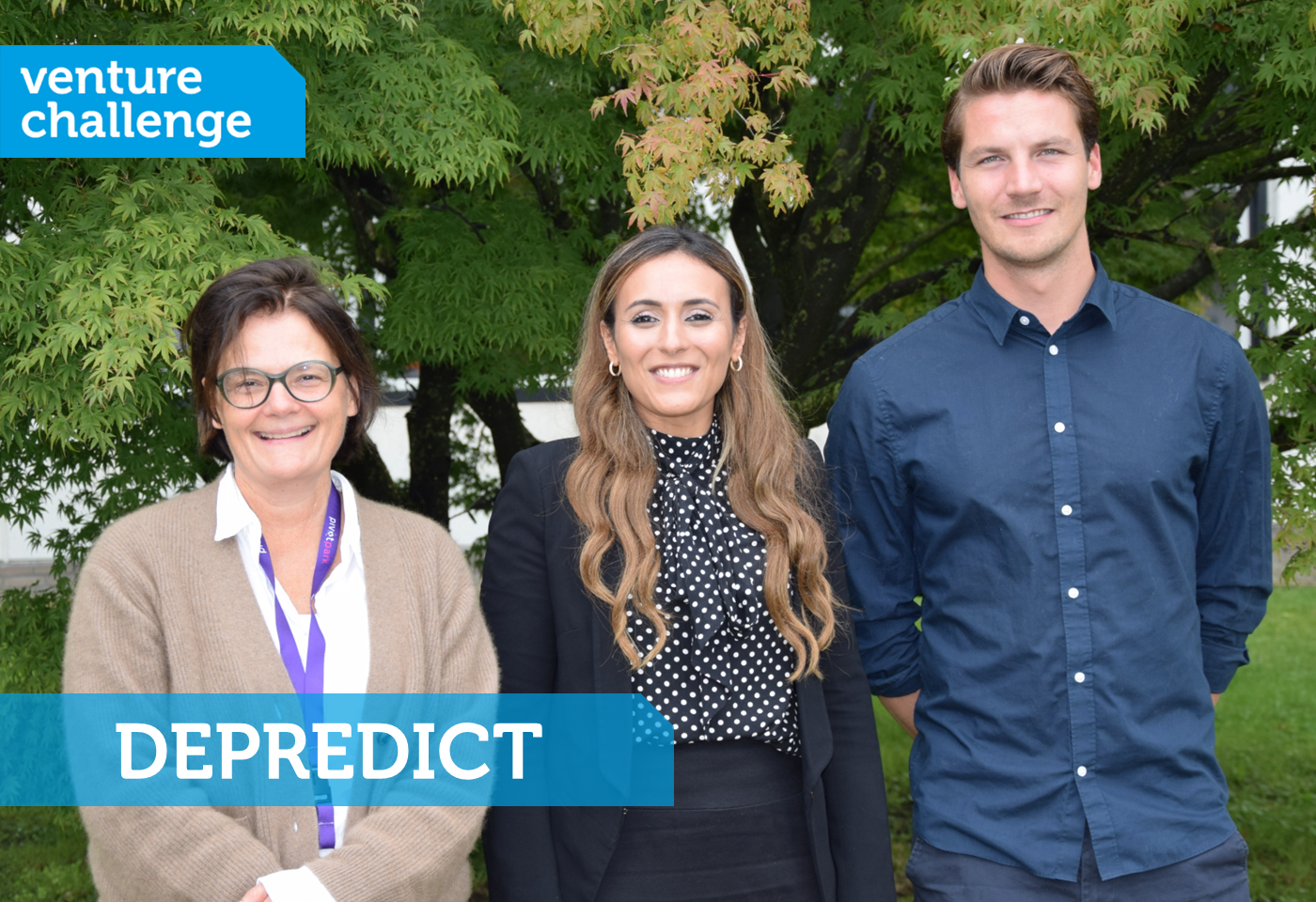
From left to right: Liesbeth Reneman, Nawal Bahai el Idrissi, Ruben Boyd (not in the picture: Maarten Poirot)
Fenix - Safe and effective cancer treatment improving durable response without side effects
Cancer is a global problem and treatment failure and metastasis are the leading causes of death. The dysregulation of the Notch stem cell pathway drives tumour heterogeneity, therapy resistance, and metastasis. Unfortunately, no approved Notch therapeutics exist due to toxicities in healthy tissues. This signifies a clear need for a game-changing approach to eliminate therapy-resistant tumour cells with healthy tissue preservation. In our groundbreaking research, we capitalized on the unique biology of intra-tumour hypoxia, common in most cancers, which is associated with therapy resistance and poor patient outcomes. By leveraging tumour hypoxia, we developed a hypoxia activated NOTCH/gamma-secretase inhibitor (HyGSI) to block Notch signalling in tumours only. HyGSI is the first-ever dual specificity Notch inhibitor specifically activated in the hypoxic tumour microenvironment to target Notch dependent cancers safely. We will validate HyGSI’s disruptive therapeutic potential and advance its preclinical development to clinical trials as a novel treatment for difficult-to-treat cancers with significant market potential.
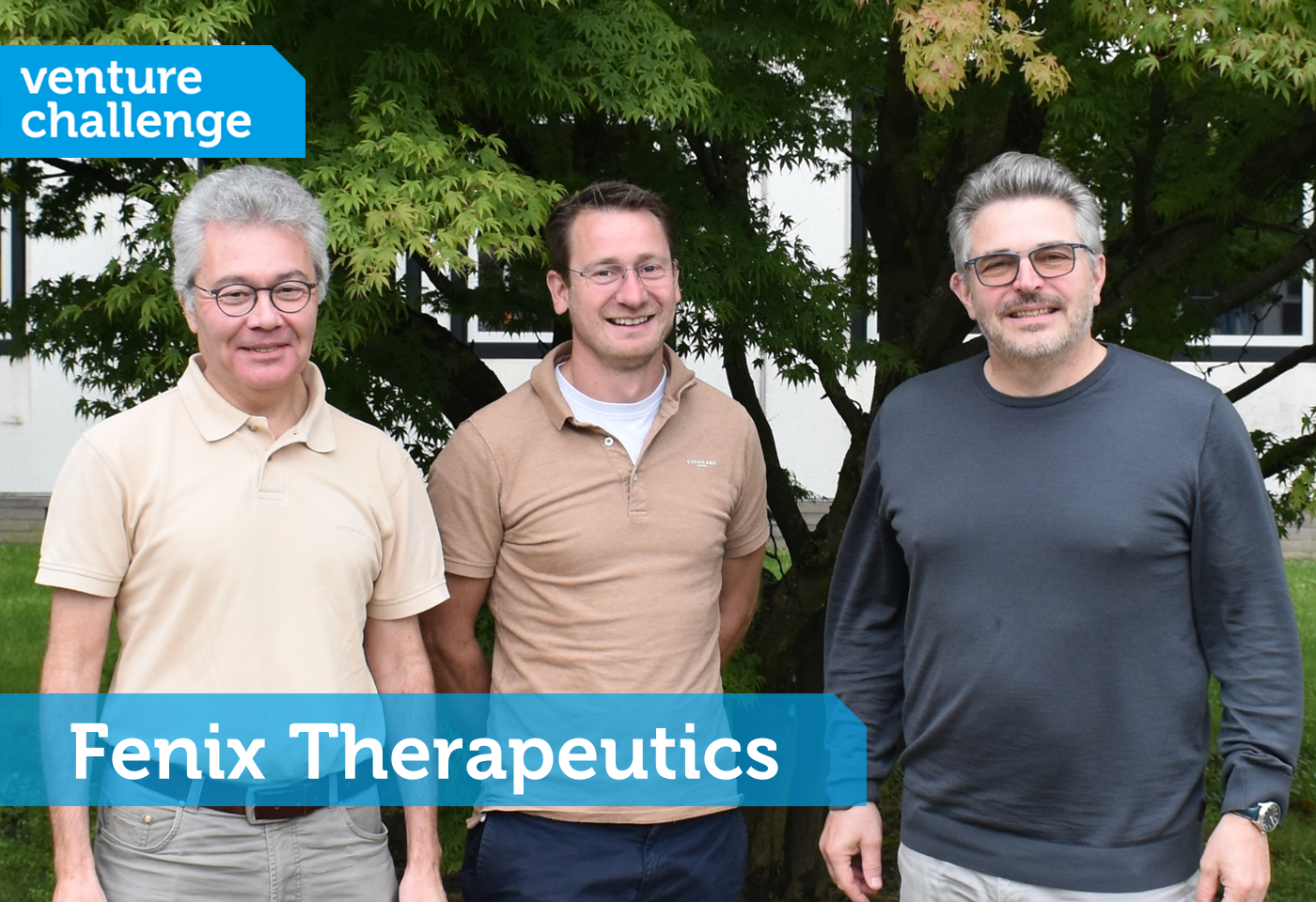
From left to right: Dirk de Ruysscher, Kasper Rouschop, Marc Vooijs
Lumox - Treating cancer without side effects using light, to improve the quality of life of patients.
The quality of life of cancer patients is not only reduced by the disease itself, but also because of the current anticancer treatments and their severe side effects. This is especially true for head and neck cancer patients since the tumor is located in the proximity of essential structures in the head, and local side effects can be detrimental. Lumox is developing a new therapy with two levels of specificity: a nanobody directs a light-activatable drug to cancer cells, which are killed only upon local light application. The nanobody-drug conjugate rapidly accumulates in the tumor, resulting in a one-day treatment protocol with no toxicity to surrounding healthy tissue or other systemic side effects.
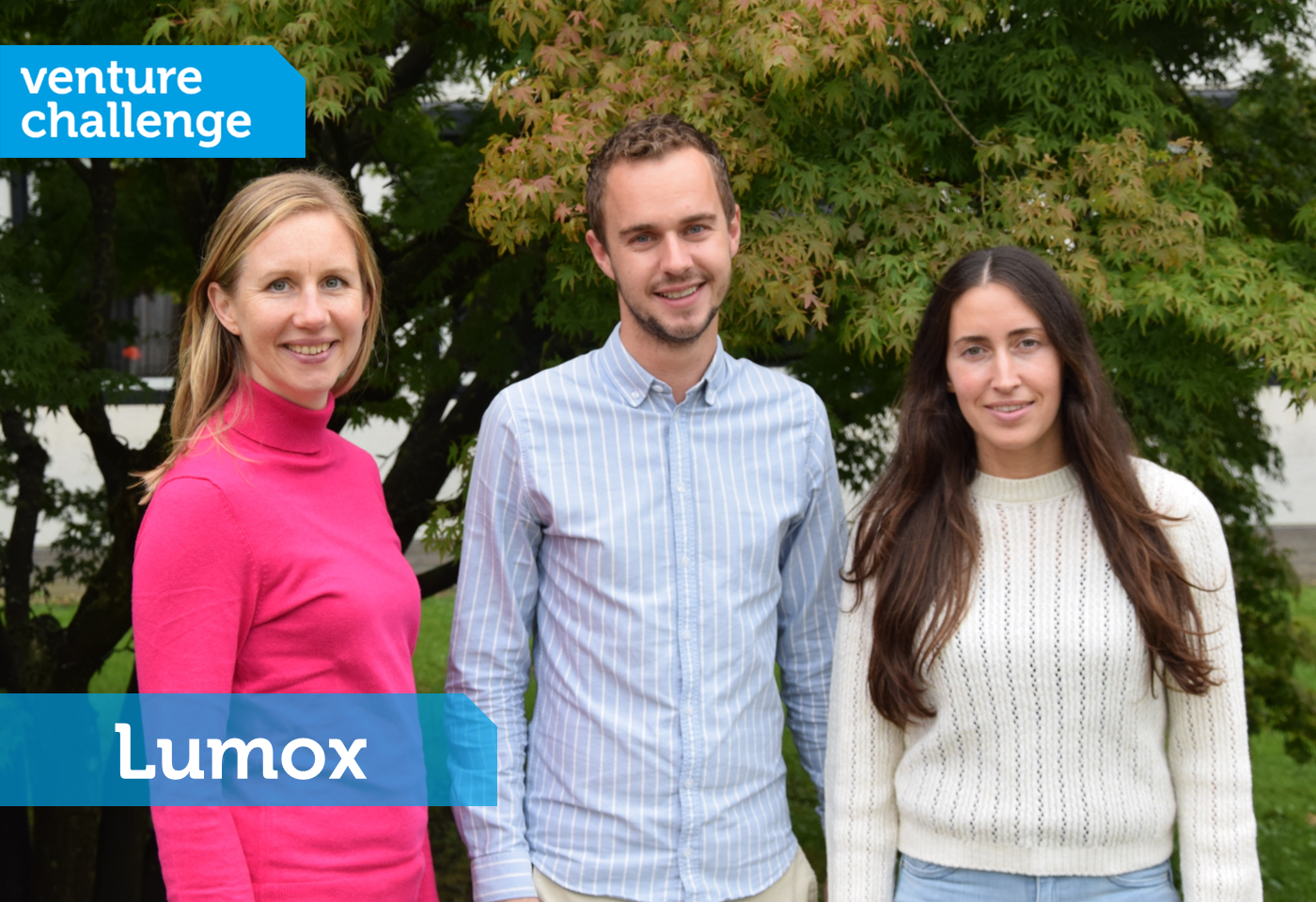
From left to right: Danielle Counotte, Sebas Pronk, Irati Beltrán Hernández (not in the picture: Sabrina Oliveira)
XHR – Cross Hospital Reading
Reporting oncology CT scans is tedious and time-consuming work for radiologists with many manual steps and no integrated AI support. We propose to improve this with XHR, a modern browser-based reporting system with an integrated AI engine meticulously comparing prior observations with current scans to detect and measure even the most subtle changes. New findings are automatically presented, guiding the radiologist to produce a more extensive and more accurate report in far less time. The XHR oncology CT reading solution will unlock collaboration and sharing of capacity amongst hospitals. It will be co-created with Dutch radiologists and used throughout the Netherlands as market entry.
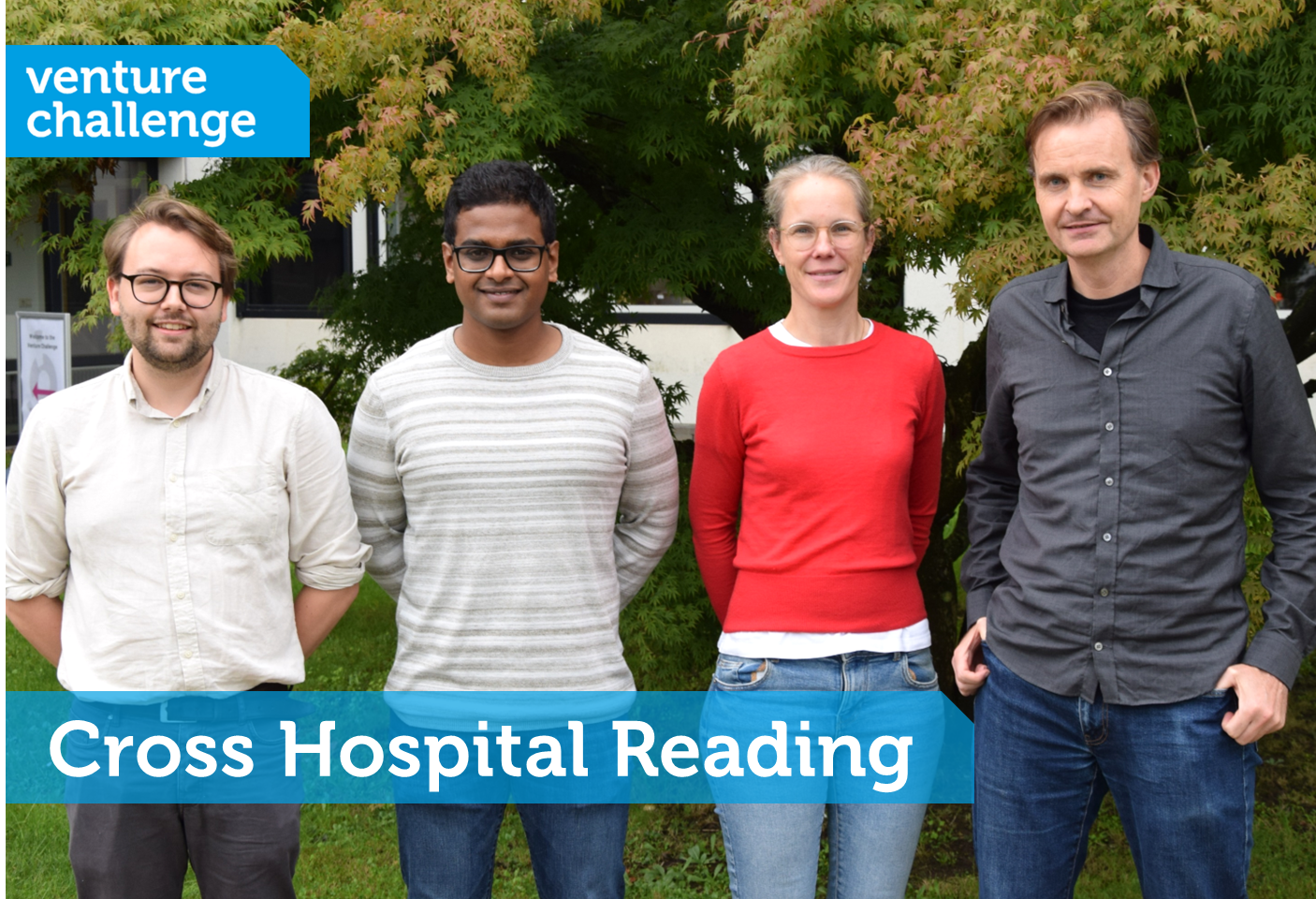
From left to right: Coen de Vente, Kiran Vaidhya Venkadesh, Alexandra Jürgens, Bram van Ginneken (not in the picture: Mathias Prokop)
XS Innovations - The Dynamic AVF: a vascular access only when the patient needs it
End-stage kidney disease (ESKD) occurs when chronic kidney disease — the gradual loss of kidney function — reaches an advanced state. Globally, over 3.8 million patients suffer from ESKD, of which ~75% rely on hemodialysis as kidney replacement therapy. For this, a functioning high-flow vascular access (VA) site is necessary. This is most frequently achieved by placing an anastomosis between a vein and an artery in the arm, as an arteriovenous graft (AVG) or fistula (AVF). Unfortunately, these only show 1-year primary patency rates of 85% and 67%, respectively. The predominant modes of failure originate from the constantly elevated and turbulent flow in the adjacent blood vessels, which ultimately lead to narrowing and occlusion of the outflow tract. However, this increased flow is only necessary for roughly 12 hours a week. Our invention is a device that can open and close the anastomosis to only provide the elevated flow during dialysis session, thus greatly reducing the complication rate and improving the patency of vascular access, and thereby improving quality of life for patients with ESKD.
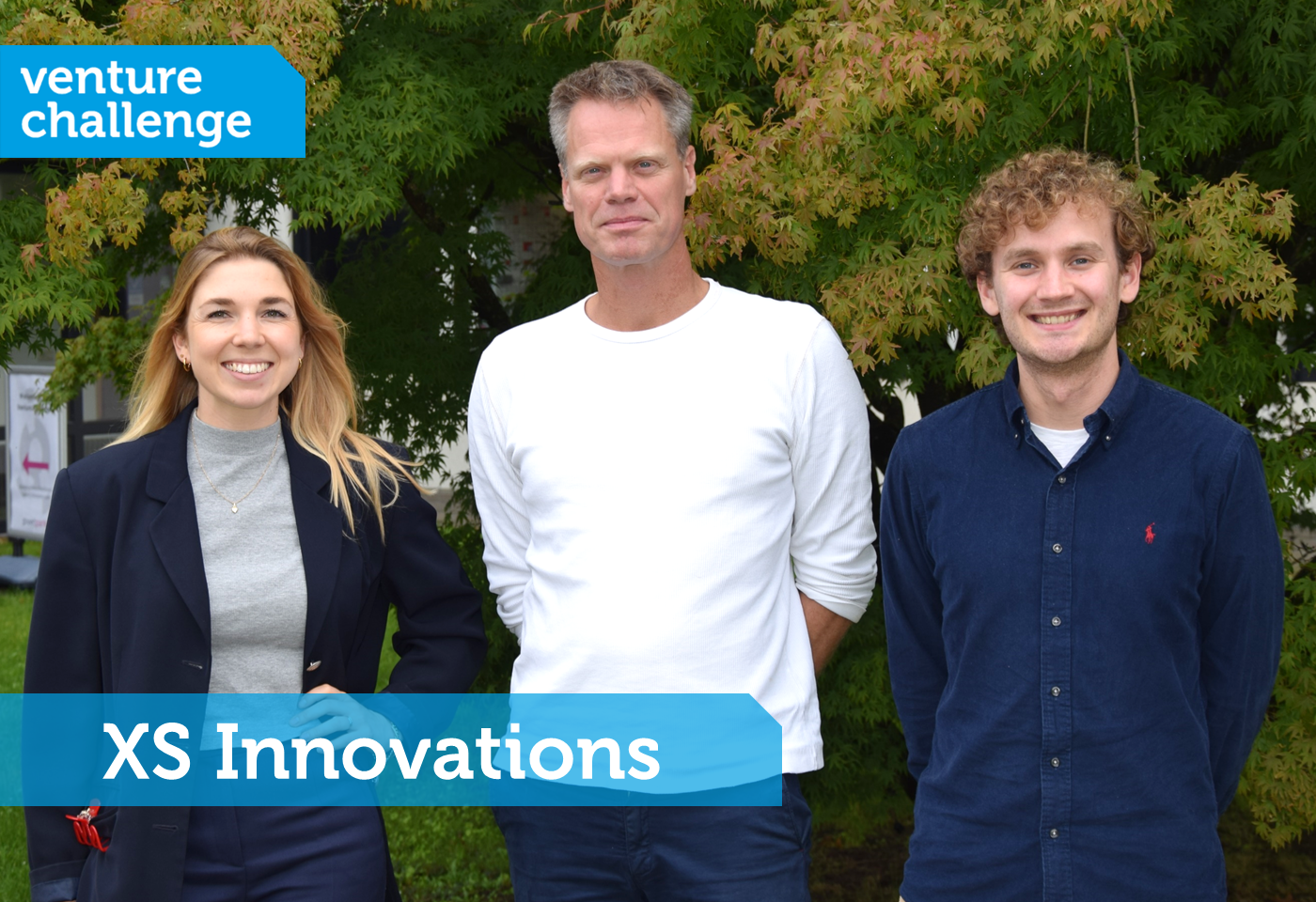 From left to right: Alexandra Klijn, Toon Stilma, Nick White (not in the picture: Joris Rotmans)
From left to right: Alexandra Klijn, Toon Stilma, Nick White (not in the picture: Joris Rotmans)
Triangle Therapeutics - Stalling metastasis: unique heparanase inhibition technology for boosting anticancer treatments
Pathological overexpression of heparanase (HPSE) strongly drives the growth of aggressive metastatic cancers by degrading the extracellular matrix (ECM) within primary tumor cells. HPSE-mediated heparan sulfate proteoglycan (HSPG) degradation facilitates cancer cell migration, whilst growth factors and cytokines released upon HSPG degradation stimulate proliferation and angiogenesis. HPSE therefore represents a promising anti-metastatic cancer target, yet and despite many efforts no HPSE inhibitors have reached the clinic to date. The most effective molecules discovered to date comprise heterogeneous, anionic polysaccharides that act as competitive HPSE inhibitors and that due to their nondrug-like structures (size, heterogeneity) have been discontinued. We have identified a unique class of small, structurally-well defined mechanism-based heparanase inhibitors, that covalently and irreversibly inhibit HPSE. Our compounds, for which we have filed a patent application, are active in vivo in three metastatic cancer models where they have proven to be at least equally active as the current best-in-class competitive HPSE inhibitor and synergistic to the existing clinical multiple myeloma drug, bortezomib.
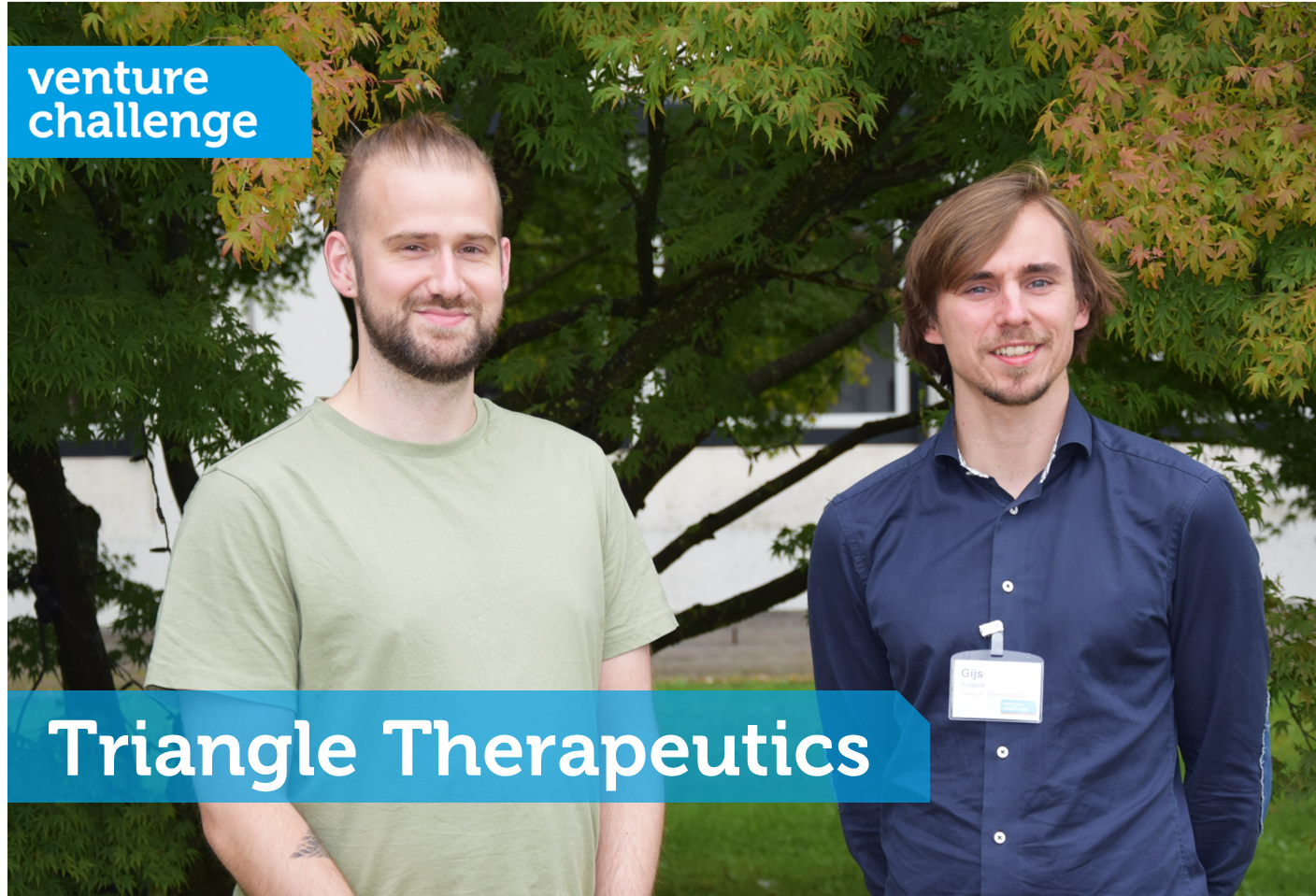 From left to right: Vincent Lit, Gijs Ruijgrok (not in the picture: Hermen Overkleeft)
From left to right: Vincent Lit, Gijs Ruijgrok (not in the picture: Hermen Overkleeft)